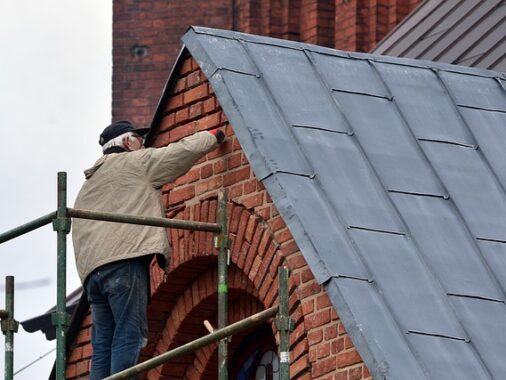Home renovations can transform a living space, adding value, functionality, and aesthetics. However, they can also become a nightmare if not approached correctly. Many homeowners jump into projects with enthusiasm, only to face challenges they hadn’t anticipated. From unexpected costs to poor design choices, the pitfalls are numerous. To help you sidestep these common renovation mistakes, we’ve compiled insights and lessons from seasoned homeowners who have been through it all. Use these tips to plan effectively, avoid stress, and achieve the results you envision.
1. Underestimating the Budget: Prepare for the Unexpected
One of the most common mistakes homeowners make is underestimating the cost of renovations. It’s easy to set a budget based on ideal scenarios, but unexpected expenses often arise. Experienced renovators recommend setting aside an additional 15-20% as a contingency fund. This safety net will cover unplanned costs, such as discovering mold, structural issues, or outdated electrical systems.
Key Takeaways:
- Always get multiple quotes from contractors.
- Factor in costs for permits, design changes, and materials.
- Prepare for price fluctuations in materials due to supply chain issues.
2. Ignoring Proper Planning: Prioritize and Strategize
Jumping into a renovation without a detailed plan is a recipe for disaster. Experienced homeowners stress the importance of meticulous planning before breaking ground. Planning involves more than just choosing paint colors or tiles. It’s about scheduling tasks in the right order, coordinating with contractors, and ensuring all necessary permits are secured.
Key Takeaways:
- Develop a comprehensive timeline for each phase of the project.
- Create a checklist of materials and ensure everything is available before starting.
- Confirm that the contractor has a clear understanding of your vision and expectations.
3. Overlooking Permits and Regulations: Stay Legally Compliant
Skipping the permit process or ignoring local regulations is a serious mistake. Not only can it halt your project, but it may also result in hefty fines. Additionally, unpermitted work can devalue your home and cause problems if you decide to sell.
Key Takeaways:
- Check with your local authorities about which permits are required for different renovation types.
- Factor in the time needed to get approvals, as delays are common.
- Ensure that your contractor is licensed and familiar with local building codes.
4. Compromising on Quality: Invest in Durable Materials
While it might be tempting to cut costs by opting for cheaper materials, this decision often backfires in the long run. Durability and quality are essential, especially in areas with heavy use, like kitchens and bathrooms. Skimping on quality can lead to frequent repairs, reducing the overall value of your renovation.
Key Takeaways:
- Choose high-quality materials for foundational elements like plumbing, electrical work, and flooring.
- For surfaces and finishes, invest in products that are both visually appealing and long-lasting.
- Don’t sacrifice functionality for aesthetics—prioritize what will stand the test of time.
5. Overpersonalizing the Design: Balance Style and Resale Value
Your home should reflect your personal style, but overly specific designs can limit your home’s appeal if you decide to sell. Experienced renovators suggest choosing neutral palettes for major elements like flooring and cabinetry, then incorporating personal tastes through easily changeable accents.
Key Takeaways:
- Keep permanent fixtures like countertops, cabinetry, and tiles relatively neutral.
- Use paint, wallpaper, and decor to express personality, as these are easy to update.
- Always consider how your design choices impact resale value.
6. Neglecting Lighting: Plan for Both Natural and Artificial Light
Lighting is often an afterthought, but it plays a crucial role in the functionality and ambiance of a space. Poor lighting can make even the most beautifully renovated room feel cramped and uninviting. Prioritize layered lighting, combining natural light, ambient, task, and accent lighting for a well-balanced effect.
Key Takeaways:
- Maximize natural light with larger windows or skylights.
- Include a mix of task lighting (under-cabinet lights, reading lamps) and ambient lighting (chandeliers, pendant lights).
- Consider dimmer switches to adjust lighting levels according to mood and activity.
7. Overlooking Storage: Plan for Space Optimization
A beautifully designed home without adequate storage is impractical. Lack of storage can lead to clutter, undermining the renovation’s purpose. Thoughtful storage solutions make a space more functional and enhance its aesthetic appeal.
Key Takeaways:
- Utilize vertical space with tall cabinets, shelving, and built-ins.
- Consider multi-functional furniture like storage benches and ottomans.
- Include hidden storage options, such as pull-out pantry shelves or under-stair storage.
8. Trying to DIY Complex Projects: Know When to Call a Professional
While DIY projects can be rewarding and cost-effective, tackling complex tasks like plumbing, electrical work, or structural changes without expertise can result in costly mistakes. Always assess your skills realistically and understand when it’s best to hire a professional.
Key Takeaways:
- Leave structural changes, major electrical, and plumbing work to licensed professionals.
- Consider DIY for cosmetic updates like painting, minor landscaping, or installing hardware.
- Don’t underestimate the time and tools required for larger DIY projects.
9. Poor Contractor Selection: Do Your Due Diligence
Choosing the wrong contractor is one of the costliest mistakes homeowners make. A good contractor can make the renovation process smooth, while a poor one can lead to delays, subpar workmanship, and legal disputes. Spend time researching and vetting potential contractors.
Key Takeaways:
- Always check references and read reviews.
- Request a detailed contract outlining the scope of work, payment schedules, and timelines.
- Communicate regularly to ensure the project stays on track.
10. Forgetting to Consider the Future: Plan for Long-Term Needs
Renovations should not only meet your current needs but also consider future requirements. Whether planning for a growing family, aging in place, or increased energy efficiency, think long-term to avoid costly re-renovations down the road.
Key Takeaways:
- Consider future-proofing with adaptable layouts, wider doorways, or energy-efficient upgrades.
- Plan for flexible spaces that can evolve with changing needs.
- Include sustainable choices to reduce long-term maintenance costs.
11. Disregarding Curb Appeal: Don’t Neglect the Exterior
Many homeowners focus solely on interior renovations and overlook the exterior. A neglected exterior can diminish the impact of your interior upgrades and lower your home’s overall value. Pay attention to landscaping, entryways, and siding to create a welcoming and cohesive look.
Key Takeaways:
- Invest in landscaping to enhance curb appeal.
- Keep the front entry clean and well-maintained with fresh paint and updated lighting.
- Ensure that exterior finishes complement the interior style.
Conclusion
A successful renovation requires more than just inspiration and enthusiasm—it demands careful planning, realistic budgeting, and the right expertise. By learning from the mistakes of seasoned homeowners and following these guidelines, you can achieve a beautiful, functional, and valuable home without unnecessary stress and regret.



